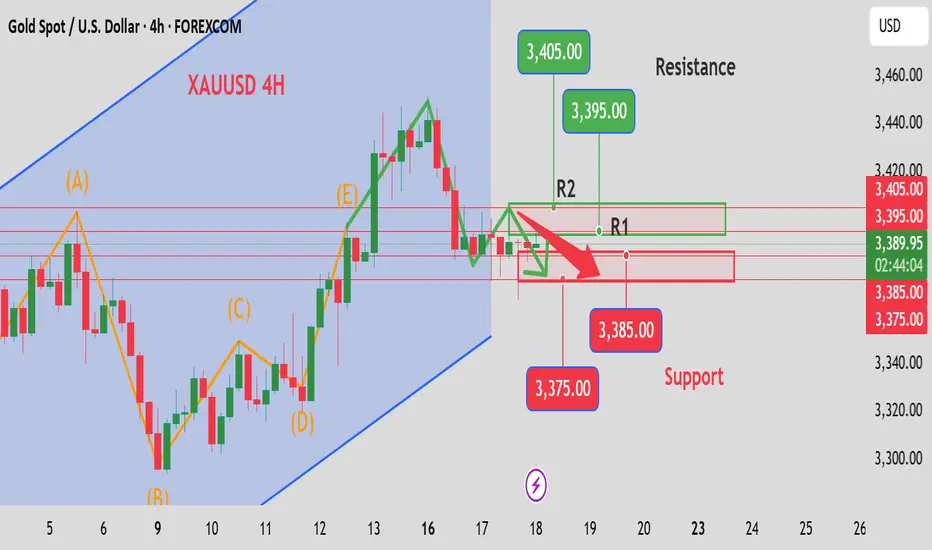I. Gold Trend Analysis
(1) Impact of Geopolitical Factors
In the preceding period, intense conflicts between Israel and Iran—marked by reciprocal missile attacks—escalated tensions, causing gold prices to surge significantly and touch record highs. However, recent developments indicate both sides are attempting to communicate, prompting safe-haven funds to retreat from the gold market and flow into equities, funds, and other sectors. This is analogous to a "receding tide" of hot money that initially flooded the gold market, naturally influencing prices to decline. Nevertheless, the Middle East remains a complex and volatile region, leaving uncertainties about potential future escalations. If contradictions reignite, risk-aversion demand will resurface, propelling gold prices upward. Thus, while the current lull has triggered price corrections, geopolitical factors remain a **"ticking time bomb"** for gold trends, warranting constant vigilance.
(2) Impact of Economic Data and Monetary Policy Expectations
At 8:30 PM tonight, the U.S. will release retail data—a key indicator reflecting consumer spending patterns this month (similar to gauging neighbor Lao Wang's monthly shopping habits). If the data shows Americans spent more than expected (forecast +0.5%), the Fed may consider hiking rates. Rate hikes act like tightening the market's "purse strings," strengthening the U.S. dollar and potentially pressuring gold prices downward. Meanwhile, the Bank of Japan's potential move to tighten monetary policy hangs over the gold market like **"two swords"**, unsettling investors who have pre-emptively sold gold, accelerating price declines. Additionally, conflicting statements from Fed officials—some hawkish, some dovish—have left markets guessing about future policy directions, further complicating gold's price trajectory.
(3) Techncal Analysis
Technically, gold surged to an eight-week high but has since deflated, breaking below $3,400 yesterday and extending losses today. K-line patterns show increasing bearish candles with long bodies, indicating strengthening bearish momentum. The moving average system has formed a **"death cross"** as short-term averages cross below long-term ones—a typical signal of a downward trend. On the daily chart, gold is trading within a descending channel, capped by the upper trendline and testing previous support levels. A break below key support could trigger panic selling, deepening declines, while stabilization at support may allow bulls to counterattack and fuel a rebound.
In summary, gold prices are currently in a downward trend, driven by eased geopolitical tensions and shifting economic/data-driven policy expectations. However, with high market uncertainty, close monitoring of Middle East developments, U.S. economic data, and central bank policy shifts is essential—these factors could rapidly alter gold's trajectory.
Today's gold trading strategy, I hope it will be helpful to you
XAUUSD sell@3395~3405
SL:3420
TP:3385~3375
(1) Impact of Geopolitical Factors
In the preceding period, intense conflicts between Israel and Iran—marked by reciprocal missile attacks—escalated tensions, causing gold prices to surge significantly and touch record highs. However, recent developments indicate both sides are attempting to communicate, prompting safe-haven funds to retreat from the gold market and flow into equities, funds, and other sectors. This is analogous to a "receding tide" of hot money that initially flooded the gold market, naturally influencing prices to decline. Nevertheless, the Middle East remains a complex and volatile region, leaving uncertainties about potential future escalations. If contradictions reignite, risk-aversion demand will resurface, propelling gold prices upward. Thus, while the current lull has triggered price corrections, geopolitical factors remain a **"ticking time bomb"** for gold trends, warranting constant vigilance.
(2) Impact of Economic Data and Monetary Policy Expectations
At 8:30 PM tonight, the U.S. will release retail data—a key indicator reflecting consumer spending patterns this month (similar to gauging neighbor Lao Wang's monthly shopping habits). If the data shows Americans spent more than expected (forecast +0.5%), the Fed may consider hiking rates. Rate hikes act like tightening the market's "purse strings," strengthening the U.S. dollar and potentially pressuring gold prices downward. Meanwhile, the Bank of Japan's potential move to tighten monetary policy hangs over the gold market like **"two swords"**, unsettling investors who have pre-emptively sold gold, accelerating price declines. Additionally, conflicting statements from Fed officials—some hawkish, some dovish—have left markets guessing about future policy directions, further complicating gold's price trajectory.
(3) Techncal Analysis
Technically, gold surged to an eight-week high but has since deflated, breaking below $3,400 yesterday and extending losses today. K-line patterns show increasing bearish candles with long bodies, indicating strengthening bearish momentum. The moving average system has formed a **"death cross"** as short-term averages cross below long-term ones—a typical signal of a downward trend. On the daily chart, gold is trading within a descending channel, capped by the upper trendline and testing previous support levels. A break below key support could trigger panic selling, deepening declines, while stabilization at support may allow bulls to counterattack and fuel a rebound.
In summary, gold prices are currently in a downward trend, driven by eased geopolitical tensions and shifting economic/data-driven policy expectations. However, with high market uncertainty, close monitoring of Middle East developments, U.S. economic data, and central bank policy shifts is essential—these factors could rapidly alter gold's trajectory.
Today's gold trading strategy, I hope it will be helpful to you
XAUUSD sell@3395~3405
SL:3420
TP:3385~3375
Trade active
I will share accurate data and strategies every day. Thank you for your attention.Disclaimer
The information and publications are not meant to be, and do not constitute, financial, investment, trading, or other types of advice or recommendations supplied or endorsed by TradingView. Read more in the Terms of Use.
Disclaimer
The information and publications are not meant to be, and do not constitute, financial, investment, trading, or other types of advice or recommendations supplied or endorsed by TradingView. Read more in the Terms of Use.
